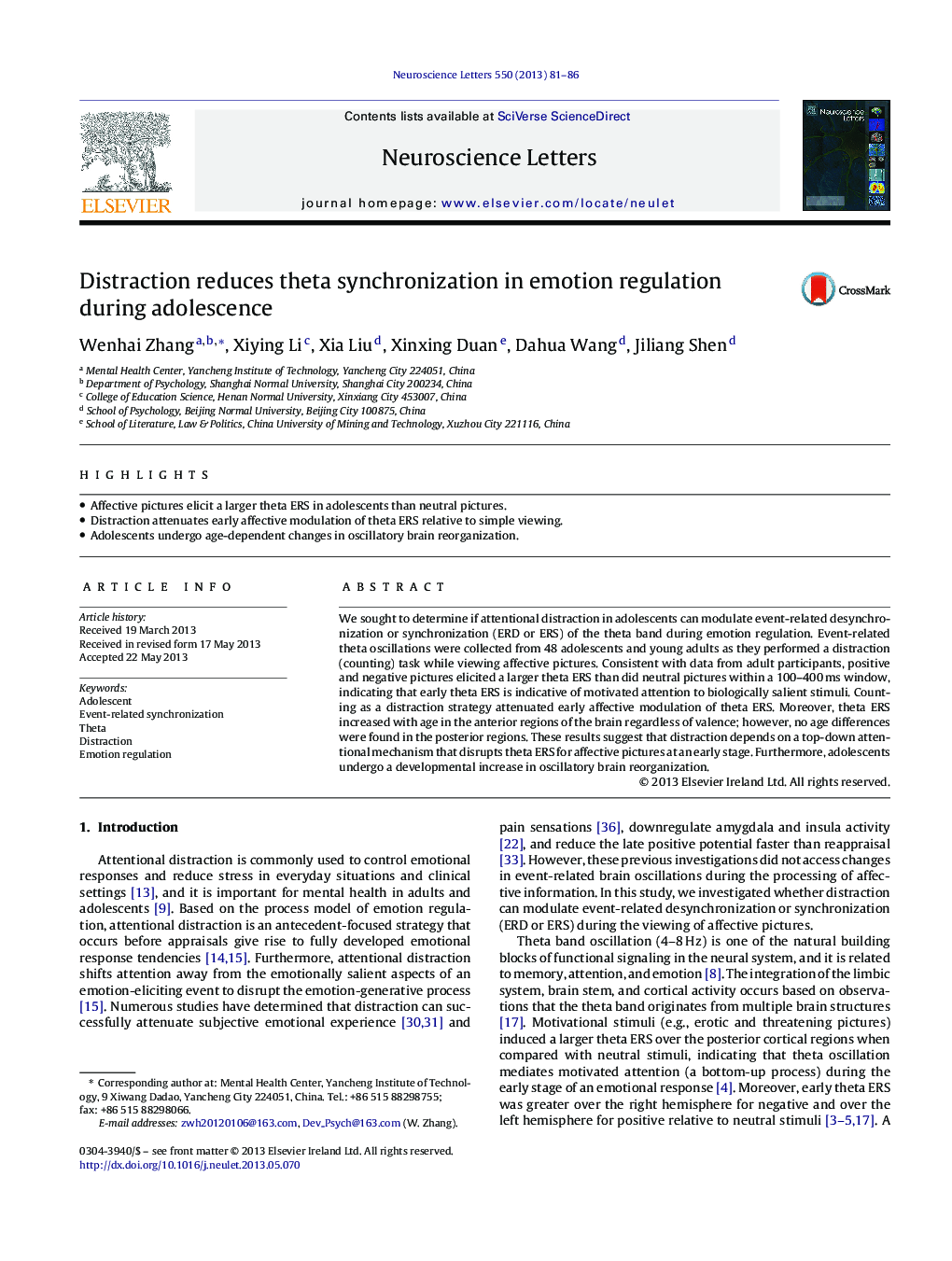| Article ID | Journal | Published Year | Pages | File Type |
|---|---|---|---|---|
| 6282880 | Neuroscience Letters | 2013 | 6 Pages |
Abstract
We sought to determine if attentional distraction in adolescents can modulate event-related desynchronization or synchronization (ERD or ERS) of the theta band during emotion regulation. Event-related theta oscillations were collected from 48 adolescents and young adults as they performed a distraction (counting) task while viewing affective pictures. Consistent with data from adult participants, positive and negative pictures elicited a larger theta ERS than did neutral pictures within a 100-400Â ms window, indicating that early theta ERS is indicative of motivated attention to biologically salient stimuli. Counting as a distraction strategy attenuated early affective modulation of theta ERS. Moreover, theta ERS increased with age in the anterior regions of the brain regardless of valence; however, no age differences were found in the posterior regions. These results suggest that distraction depends on a top-down attentional mechanism that disrupts theta ERS for affective pictures at an early stage. Furthermore, adolescents undergo a developmental increase in oscillatory brain reorganization.
Related Topics
Life Sciences
Neuroscience
Neuroscience (General)
Authors
Wenhai Zhang, Xiying Li, Xia Liu, Xinxing Duan, Dahua Wang, Jiliang Shen,
